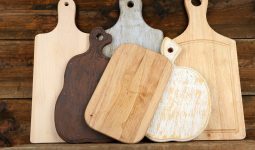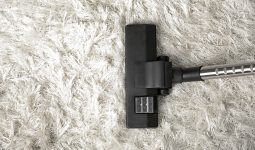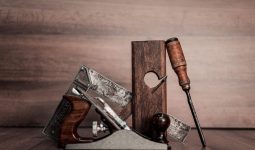From the early colonies’ matchlock muskets through the Old West’s Colt revolvers and Winchester rifles to today’s Glock handguns, firearms have come a long way and have always been part of American life.
Unfortunately, it appears that as time goes on, gun literacy is eroding.
We take more pictures, but we know less. As a result, there is more gun violence and terror.
There are different types of guns on the market today, but they may be grouped into two groups: long guns, such as assault rifles & shotguns; handguns, such as revolvers & pistols; and machineguns.
Long guns, in general, are designed to be fired from the shoulder and fire large-caliber rounds from long barrels.
Handguns are weapons with lower calibers and shorter barrels that can be shot with one or both hands.
Different Types of Guns
To help you better understand guns, we’ve put together this gun guide, which contains every detail about the different types of guns.
1. Rifles
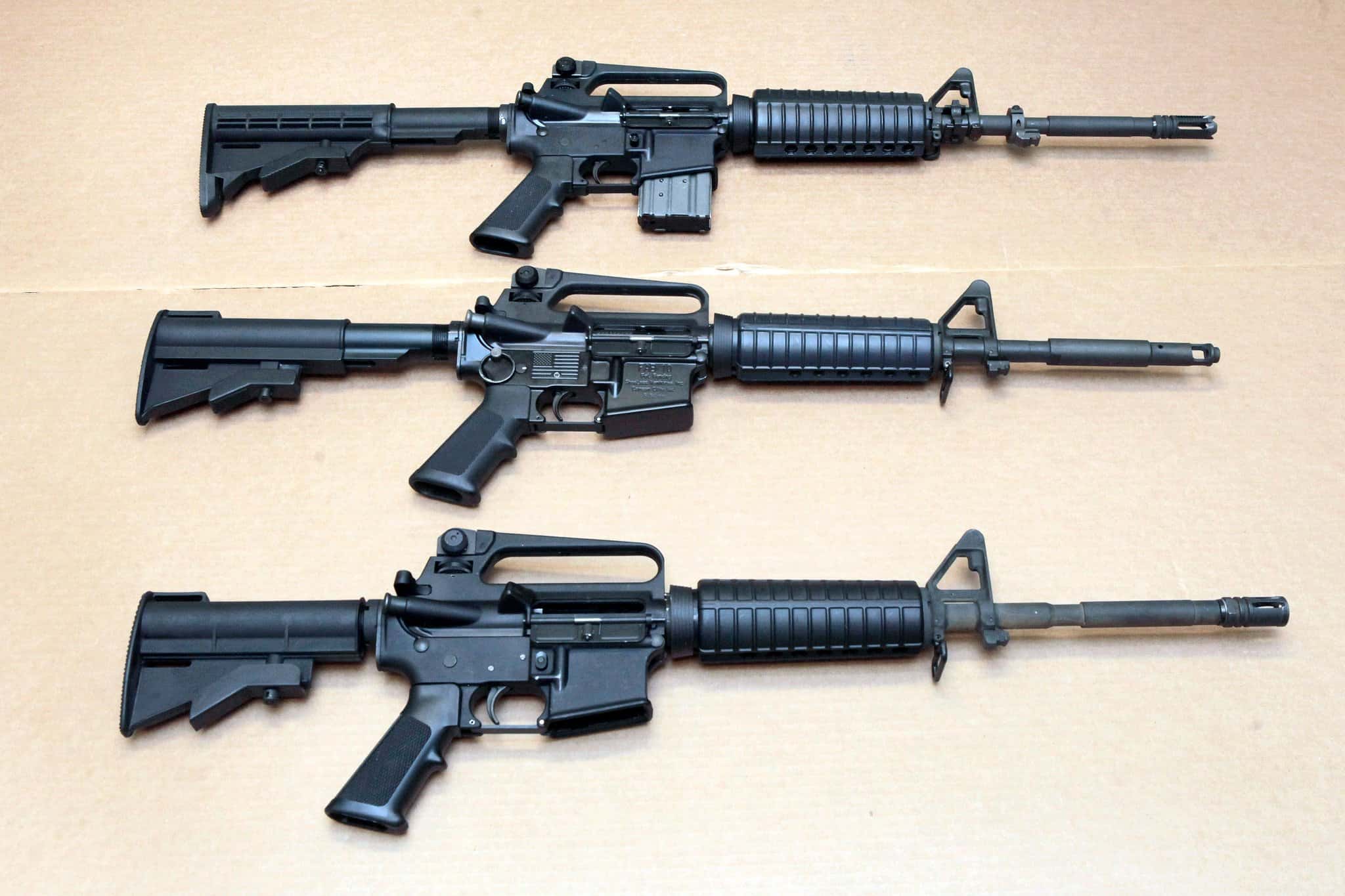
The ATF describes a rifle as a weapon that is developed or redesigned, produced or remade, and intended to be fired from the shoulder and that employs the energy of a fixed metallic cartridge to discharge just a single projectile through a rifled bore for every pull of the trigger.
Grooves were cut into the inside surface of a barrel in the early nineteenth century to enhance the accuracy of a conventional musket.
With the increased use of these rifling grooves, it was discovered that the spin these grooves imparted on the bullet made its trajectory much more flat and stable.
Bolt action rifles, lever action rifles, semi-automatic rifles, and more can all be found in the rifle category.
A rifle is distinguished by its long barrel and receiver, a stock that rests against the shoulder, and a rifled (or grooved) bore through which the projectile exits.
Different Types of Rifles
Bolt Action Rifle
A bolt action rifle is one of the most basic types of guns today. It is fired by physically pushing forward a bolt, squeezing the trigger, pulling back the bolt to eject the empty cartridge, and then pushing forward the bolt again to load a fresh cartridge.
Bolt action weapons are accurate but sluggish to fire due to their manual nature. In an internal or detachable magazine, bolt action rifles can contain between four and 10 bullets.
The Remington 700 and Howa 1500 are two examples of bolt action rifles.
Lever Action Rifle
These types of guns are popular in Western films and date back to the 19th century.
Pulling the rifle’s lever loads a new bullet, the user fires the trigger, and another pull of the lever ejects the already empty cartridge and loads a new one.
It is much faster to shoot than a bolt-action rifle because of the position of the lever. Winchester 94 and Marlin 336 are two examples of this modern firearm.
Semi-automatic Rifle
These types of guns come in a variety of shapes and sizes, but they all have one thing in common: every time you pull the trigger, one bullet is fired, and a new round is loaded automatically.
These types of guns are commonly referred to as “automatic” weapons; however, that phrase relates to the loading process rather than the shooting.
The automatic loading procedure typically recycles some of the gun’s gunpowder gases or momentum, then ejects the empty cartridge and loads a fresh one.
External magazines, which store five to thirty rounds and can be replaced quickly to reload the weapon, are common on semi-automatic rifles.
The AR-15 and Browning BAR guns are examples of semi-automatic rifles.
How to Clean a Rifle?
If you possess a rifle and want to learn how to clean it properly, various resources and items are available to help you.
To clean a rifle properly, you’ll need a cleaning rod, patches, solvent, rust protection, and other cleaning supplies.
Maintaining your rifle will maintain accuracy and performance while also preventing malfunctions. Before beginning the cleaning procedure, make sure your rifle is unloaded.
This includes disassembling the rifle, checking for obvious flaws, wiping off dust and grit, cleaning the barrel and other metal parts, rust prevention, lubricating, and reassembling the weapon.
2. Shotguns
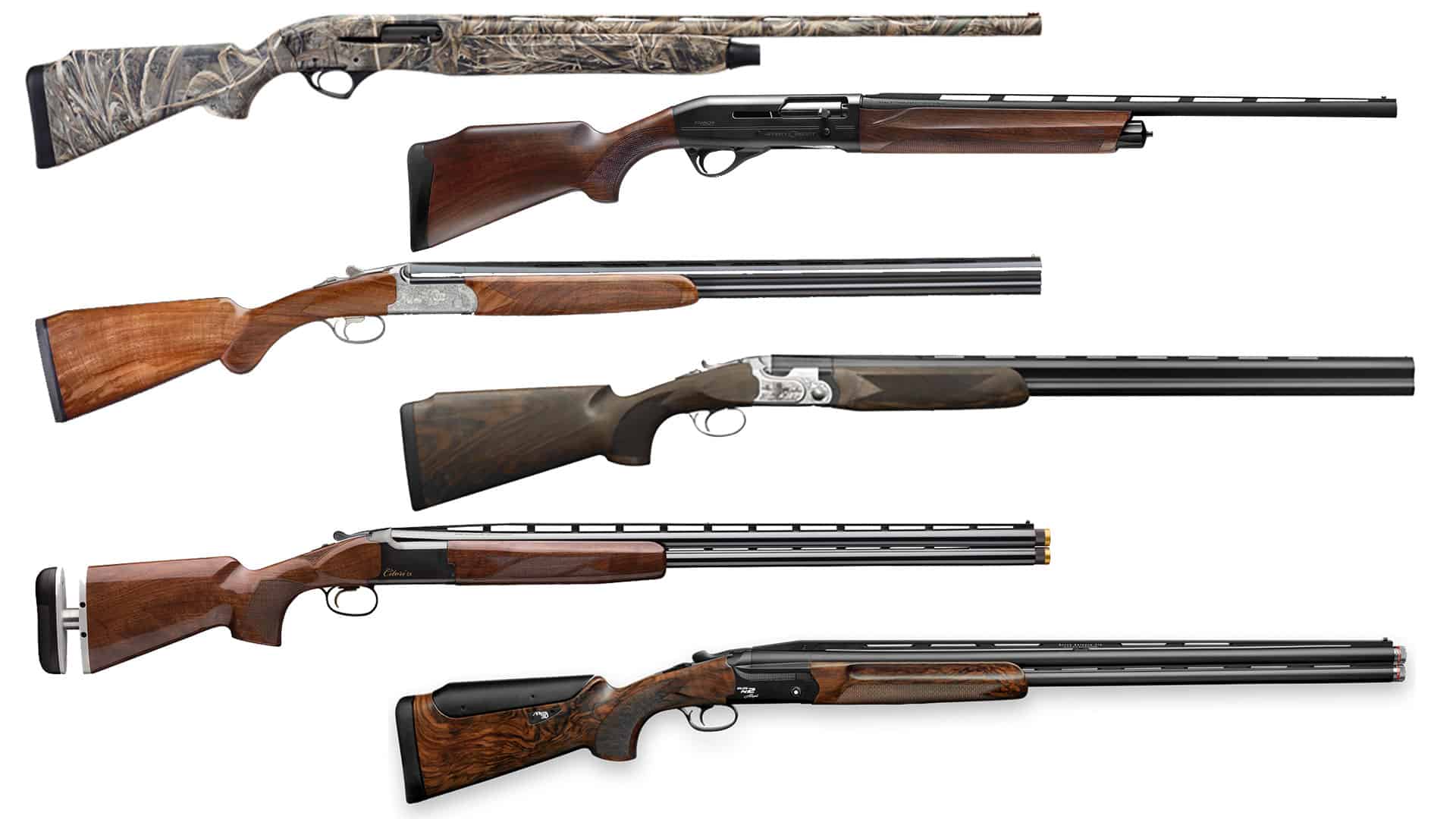
Shotguns are long firearms with long barrels that discharge a large number of little steel or lead pellets (“shot”) rather than a single bullet with each draw of the trigger.
The shot is fired in a small cone-shaped pattern from the barrel. This dispersion helps the shooter hit tiny game animals, particularly those in flight, such as ducks.
The shot size varies, with smaller birdshots being less likely to kill or incapacitate a human and larger buckshots being better for home defense.
Single-shot shotguns, pump-action shotguns in which single pump chambers, a cartridge, and semi-automatic shotguns are all available.
Shotguns such as the Mossberg 500 and Remington 870 are examples.
The blunderbuss was a small musket that was shot from the shoulder and created by Germans in the 1600s.
This is the first shotgun ever discovered. The British employed a similar weapon to hunt huge birds in the 1700s.
The term “shotgun” was not coined until 1776 to distinguish a smoothbore gun from a rifled musket.
How to Load a Shotgun?
- While placing the butt-end of the shotgun on a firm surface, use your offhand to grip the shotgun slide. With the trigger pointed away from you, the muzzle should be pointed upwards.
- Place the shell in the loading flap before the trigger guard with your dominant hand. If you push it up with your thumb, you’ll hear the shell click into place. Continue loading shells until the magazine is completely full.
- Pull the slide back and forward with a firm but smooth stroke to chamber a shell. The shotgun is now fully loaded and ready to discharge.
- If you don’t know how to load a shotgun for home defense, it’s a good idea to practice if you don’t already know how. Don’t sweat it if you know how to load a shotgun quickly. Before focusing on speed, learning how to do things correctly is vital.
How to Clean a Shotgun?
The best approach to cleaning a shotgun is the same way you would clean a rifle.
Before reassembling the shotgun, you’ll need to follow certain steps to properly disassemble it, degrease it, clean up the barrel, lubricate the action, and tighten any screws or hardware.
Ensure you have the right set of tools and materials for cleaning a gun and observe all safety precautions while doing so.
Shotgun Shooting Tips
- Before shooting a shotgun, ensure you have all of the necessary safety equipment, training, and the supervision of a skilled shooter.
- Because shotguns are designed for moving targets, aiming differs from a rifle’s. Continue to move the shotgun along the arc of your target even after you pull the trigger.
- When shooting a shotgun, instead of carefully squeezing the trigger as you would with a rifle, pull the trigger quickly.
- Recoil is a possibility. This is why stance and grip are so crucial.
3. Revolvers

Revolvers were the first multi-shot pistols, holding up to seven rounds in a spinning cylinder that matched the gun barrel and firing mechanism.
These types of guns were featured in the hands of movie cowboys (including the firing pin.)
A single pull of the trigger of a modern revolver advances the cylinder to a new cartridge, pulls back the hammer, and then releases the hammer to strike the primer with the firing pin, firing the firearm.
Semi-automatic weapons, such as modern revolvers, are classified as such. The Smith & Wesson Model 686 and the Ruger GP100 are two examples.
Unlike other handguns, a revolver does not use a magazine to feed cartridges into the barrel. Instead, a cylinder feeds ammunition into the barrel before shooting.
One of the chambers aligns with the barrel when the hammer is cocked. The round is then fired by pulling the trigger.
Each round must be put into the cylinder’s chambers separately.
How to Clean a Revolver?
A universal gun kit usually includes everything you’ll need to clean a revolver.
Preparing all of your cleaning equipment and tools ahead of time is the best approach to cleaning a revolver.
Before disassembling your firearm, have everything ready to go on a clean, level surface.
You want to be organized so you don’t forget any steps or misplace any components.
If you want to thoroughly clean your revolver, there are rods developed especially for cleaning different calibers of revolvers, so look into these.
4. Pistols
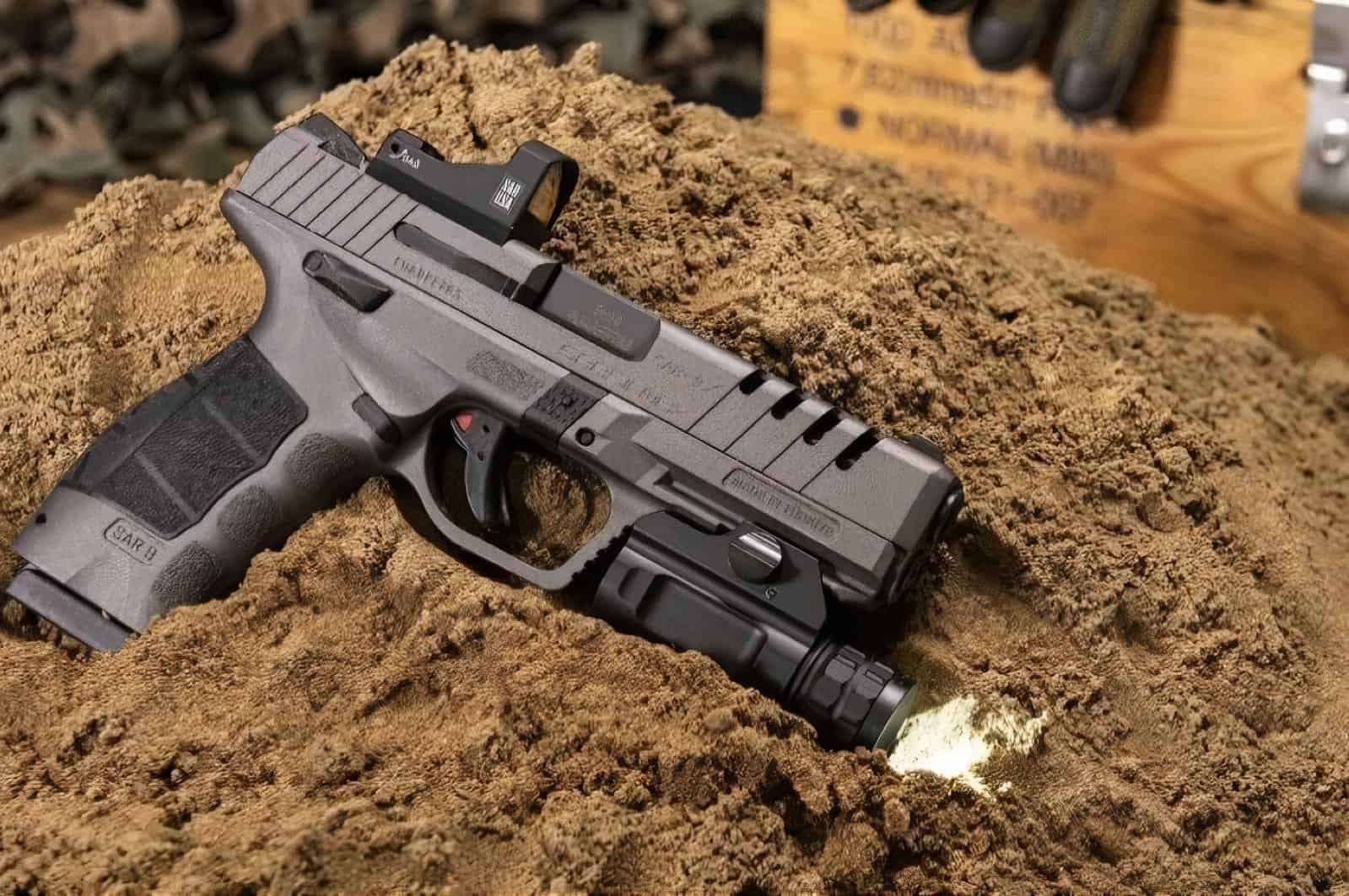
According to the ATF, a pistol is a sort of firearm designed, constructed, and intended to discharge a bullet from one or more barrels while being held in one hand.
Due to the fact that they are generally compact enough to be discharged with one hand, concealed-carry pistols are a popular choice.
It’s a short-barrelled pistol that comes in a variety of styles, including revolvers.
The more manageable size of pistols, as well as their ease of use, make pistols and revolvers very popular choices when it comes to concealed carry guns for women.
A single-shot handgun, a multi-barrel handgun, or a semi-automatic pistol are all examples of pistols.
Whether you’re shooting a semi-automatic pistol or a revolver, the way a pistol operates differs.
A revolver has a cylinder with numerous chambers that rotate to line the cartridge with the barrel, as previously explained.
When you pull the trigger, just one round will be fired. A semi-automatic pistol operates in a slightly different way. A single chamber and barrel are present.
The handgun shoots a cartridge, ejects the empty shell, and loads a fresh round into the chamber with each stroke of the trigger.
How to Clean a Pistol?
To ensure accuracy and optimal function, a handgun must be cleaned on a regular basis, especially after each use, like any other firearm.
The best approach to cleaning a pistol is the same way any handgun is cleaned.
Before reassembling the gun, you must unload it, disassemble it, clean the inside of the barrel and other components using proper tools and materials, and lubricate the essential parts.
Make sure you have all the materials on hand and that you’re cleaning your gun on a stable surface.
5. Machineguns
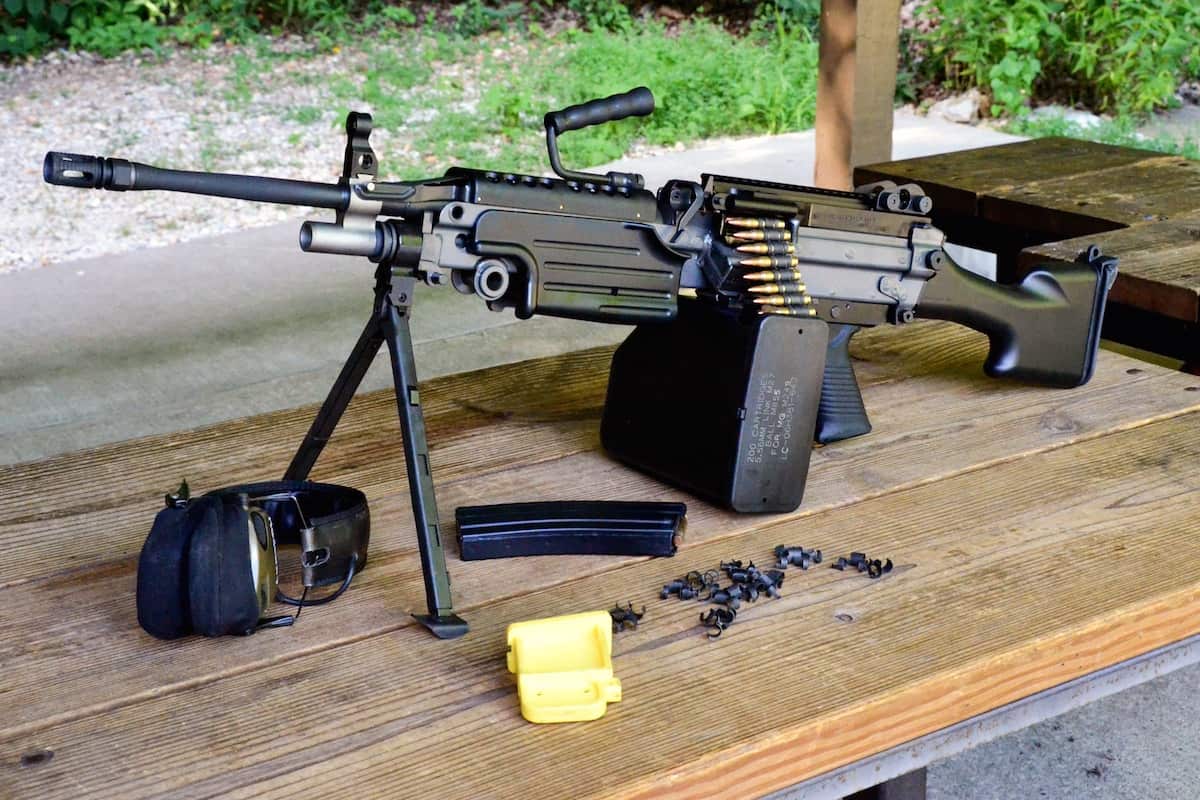
For the purposes of the National Firearms Act, the ATF has a fairly strict definition of a machine gun.
The phrase “machine gun,” according to the ATF, means:
- Any weapon that can be quickly recovered to shoot, automatically more than one shot without manual reloading, with a single trigger pull.
- Any such weapon’s frame or receiver.
- Any part designed and intended solely and exclusively for use in converting a weapon into a machinegun, or any combination of parts designed and intended for use in converting a weapon into a machinegun, or any combination of parts designed and intended for use in converting a weapon into a machinegun, or any
- Any combination of parts can be constructed into a machine gun if the pieces are in a person’s custody or control.
Hiram S. Maxim designed the first fully automatic machine gun in the United States in 1884. It was the first firearm that could fire many shots without reloading.
They did, however, rely on a person twisting a crank to fire the projectiles. During the American Civil War, the Maxim machine gun was utilized.
Before that, in 1718, London barrister James Puckle designed the Puckle Gun, which some regard as the first machine gun.
It was an early automatic weapon with a maximum rate of fire of only nine bullets per minute.
Since then, machine guns have advanced significantly, with the ability to fire numerous rounds with a single pull of the trigger.
The majority of modern machine guns have lengthy, grooved bores. The bullet enters the barrel as it is driven forward, and the grooves spin the bullet so that it exits straight.
The firing pin is a device located at one end of the barrel. When you pull the trigger, the firing pin strikes the round’s primer, causing the bullet to fire. This is how a machine gun’s “gun” operates.
The “machine” part of a machine gun comes next. When a bullet is fired, it travels in one direction while the casing travels in the opposite direction.
A spring bolt is operated by the energy produced by the bullet and casing. After the bullet has fired, this bolt is pulled backward, extracting and ejecting the casing.
The bolt will then strike the spring and begin traveling forward again, forcing another round into the barrel and striking the firing pin.
As long as the machine gun trigger is pushed, the cycle will continue.
Heavy machine guns and light machine guns are both affected by this process.
Calibers & Bullet Types
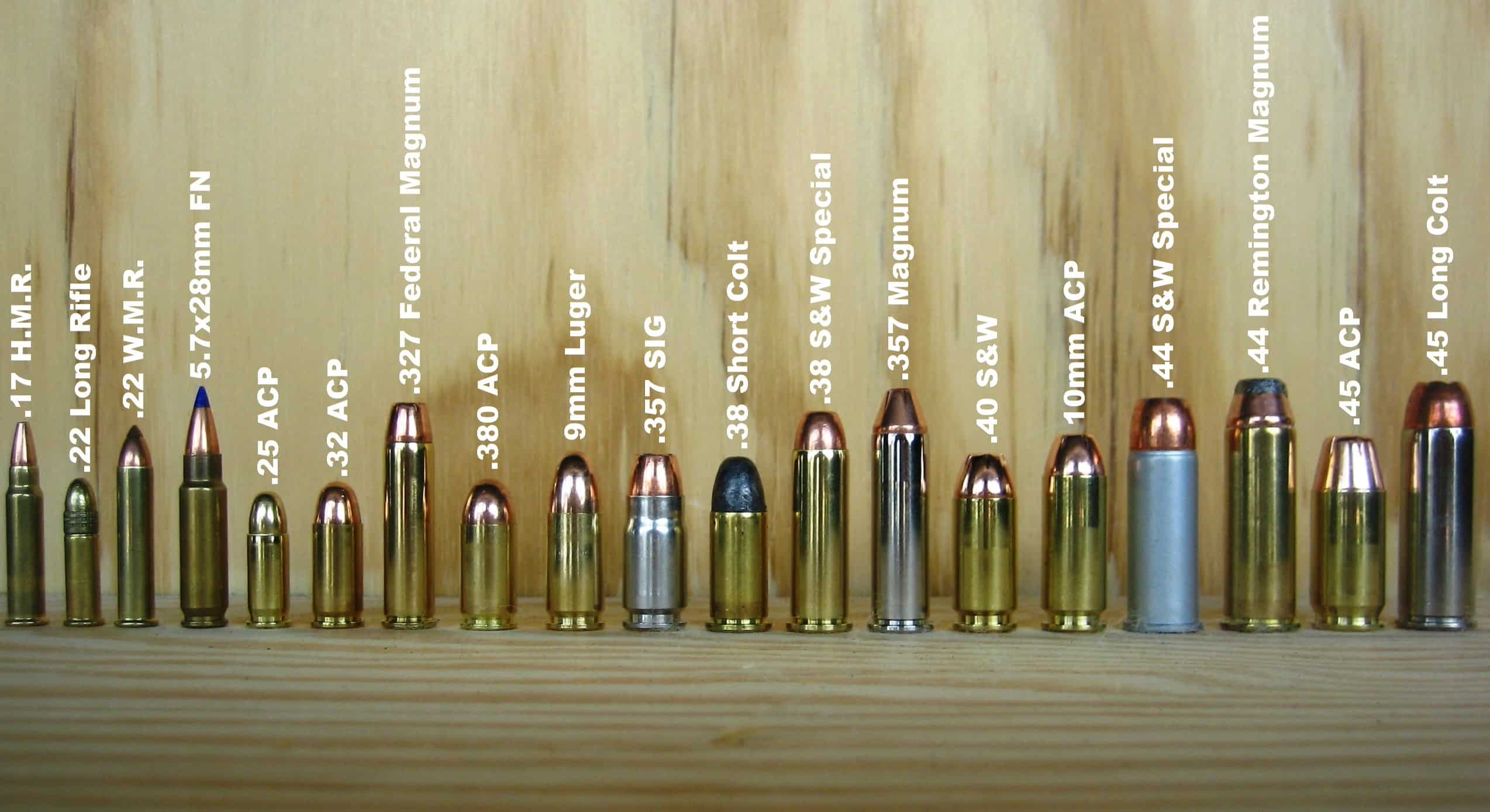
Whether on the news or not, any discussion of guns will include the term “caliber.”
This phrase refers to the type of cartridge that the weapon discharges. Bullet calibers can be measured in fractions of an inch or millimeters.
The .45 ACP round, which is used in many pistols, has a diameter of 0.45 inches or a little under half an inch.
The .22 round, .38 Special, and .500 Action Express rounds are all named for their fractional inch diameters.
The 5.56-millimeter round used in an AR-15 (also known as .223) has a diameter of 5.56 millimeters.
The nine-millimeter round has a diameter of nine millimeters. And so forth. Different bullet calibers are designed to do different jobs, and there are literally hundreds of them.
Some are designed for smaller shooters who are more sensitive to recoil, while others are designed for long-range shooting and close-range self-defense.
Bullets come in a variety of forms and sizes to handle a variety of functions.
Hollowpoint bullets contain a hollow at the nose that permits the lead to spread outward on impact, transforming the aerodynamic bullet into a lethal, high-velocity metallic blossom that leaves gaping wounds.
Armor-piercing bullets may penetrate body armor and light steel armor, and tracer bullets allow the shooter to see where his or her shots are impacting at night.
Both are primarily intended for military usage.





